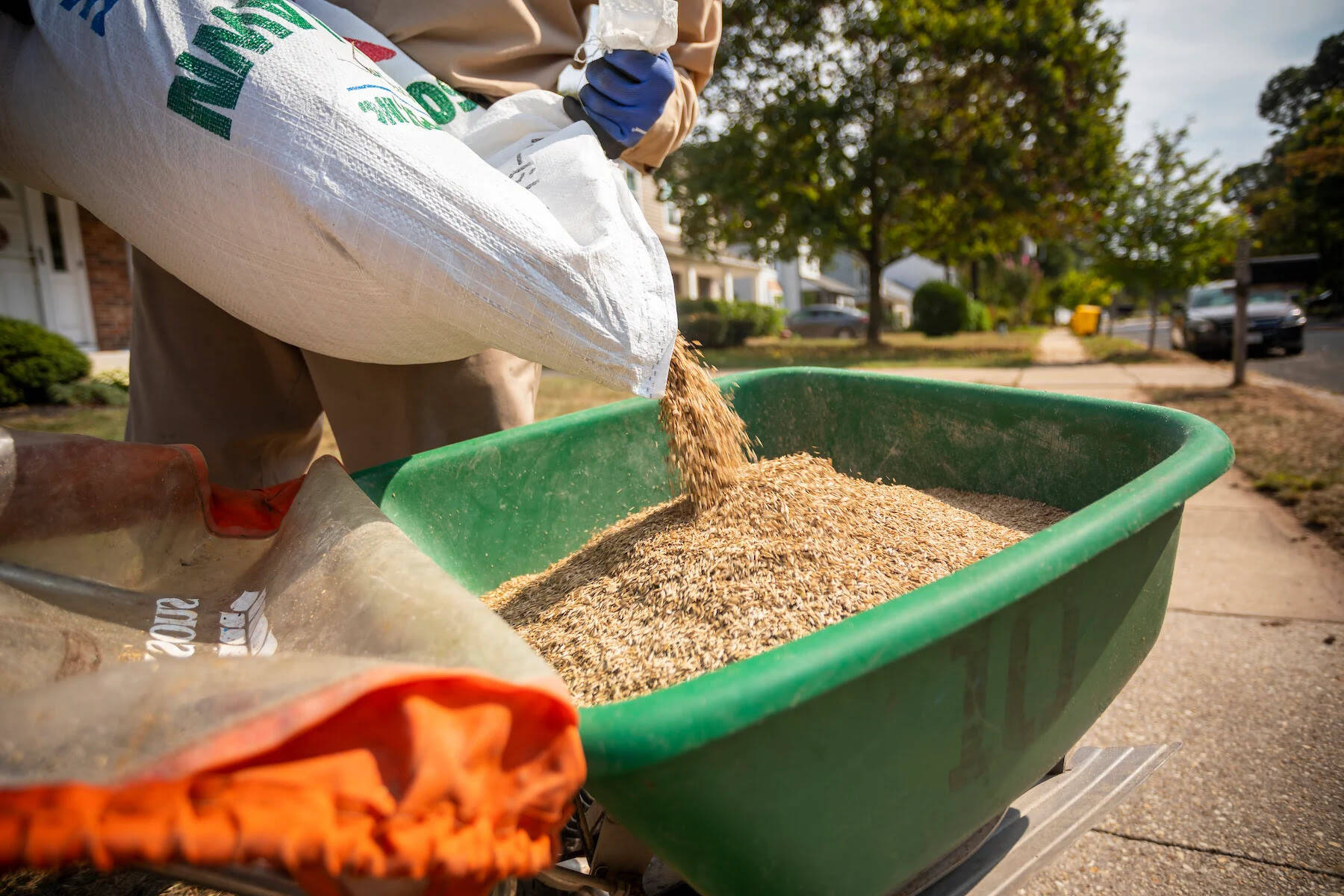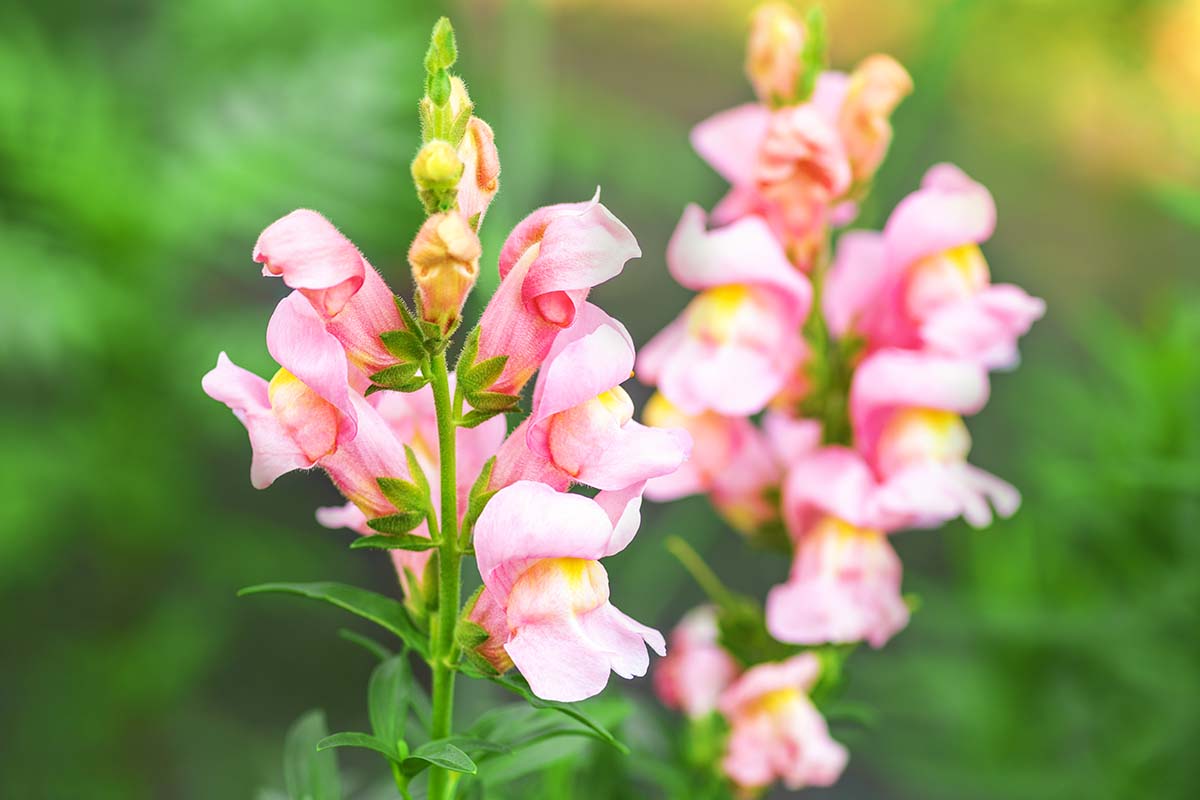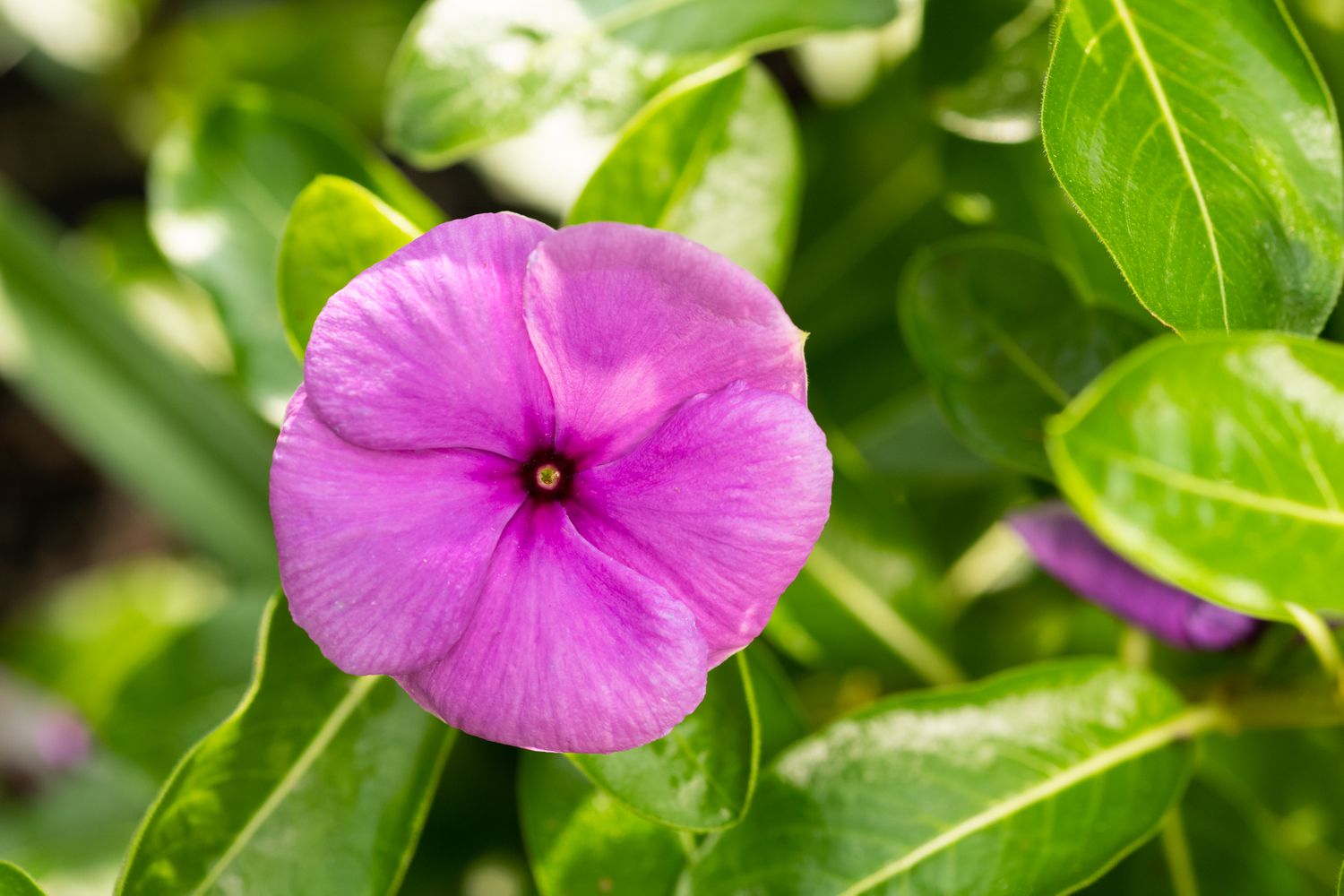Home>Garden Essentials>When To Plant Grass Seed Maryland


Garden Essentials
When To Plant Grass Seed Maryland
Modified: March 15, 2024
Looking to start a garden in Maryland? Learn the best time to plant grass seed and grow a beautiful garden in your backyard.
(Many of the links in this article redirect to a specific reviewed product. Your purchase of these products through affiliate links helps to generate commission for Storables.com, at no extra cost. Learn more)
Introduction
Gardening enthusiasts in Maryland know the importance of a lush and vibrant lawn. Whether you’re starting from scratch or looking to improve the health of your existing lawn, planting grass seed is a crucial step towards achieving the perfect green space. However, knowing when to plant grass seed in Maryland is key to ensuring successful germination and establishment of your lawn.
Planting grass seed at the right time allows the seedlings to take advantage of favorable weather conditions, promote root development, and withstand the challenges posed by Maryland’s climate. But before diving into the ideal planting time, let’s explore the factors you need to consider to make an informed decision.
Key Takeaways:
- Timing is crucial for planting grass seed in Maryland. Spring and fall offer the best conditions for successful germination and growth, so choose the season that suits your lawn’s needs and preferences.
- Proper soil preparation, high-quality grass seed, and correct planting techniques are essential for a healthy lawn. Avoid common mistakes like improper timing and over or under-watering to increase the chances of success.
Read more: When To Plant Grass In Maryland
Factors to Consider
When deciding on the best time to plant grass seed in Maryland, several factors come into play. These factors can greatly impact the success of seed germination and the overall health of your lawn. Here are some important factors to consider:
- Climate: Maryland experiences a variety of climates across the state, including zones ranging from USDA Hardiness Zone 6 to 8. It’s essential to understand the specific climate in your area to determine the optimal time for grass seed planting.
- Grass Type: Different grass species have varying growth patterns and preferences. Consider the type of grass that is best suited for your particular region in Maryland. Cool-season grasses like Kentucky bluegrass and fescue are commonly grown in the state.
- Soil Conditions: Assessing the quality and condition of your soil is crucial. Conduct a soil test to determine its pH level, nutrient content, and soil structure. This information will help you make any necessary amendments to create an ideal environment for seed germination.
- Sunlight and Shade: Pay attention to the amount of sunlight and shade your lawn receives throughout the day. This will impact your grass’s growth and determine which varieties are most suitable for your yard.
- Water Availability: Adequate water supply is essential for the germination and establishment of grass seed. Consider the availability of water in your area and plan your planting time accordingly.
- Turf Use: Determine the purpose of your lawn. Will it be used for heavy foot traffic or simply for aesthetic purposes? This will influence the type of grass seed you choose and the timing of its planting.
- Overseeding vs. Starting from Scratch: Decide whether you will be overseeding an existing lawn or starting from scratch. Overseeding can be done at different times, while starting from scratch typically requires optimal planting conditions.
By considering these factors, you’ll be able to determine the most suitable time to plant grass seed in Maryland based on your specific circumstances. Let’s now explore the ideal timeframes for grass seed planting in Maryland based on its unique climate.
Best Time to Plant Grass Seed
Knowing the ideal time to plant grass seed is essential for successful germination and establishment of a healthy lawn in Maryland. While the exact timing may vary slightly depending on your specific location, here are some general guidelines to keep in mind:
Spring: Spring is generally considered the best time to plant grass seed in Maryland. As temperatures warm up and daylight hours increase, the soil temperature becomes favorable for seed germination. Aim to plant your grass seed in early spring, typically between mid-March and mid-April. This gives the seedlings enough time to develop before the summer heat arrives.
Fall: Fall is another excellent time to plant grass seed in Maryland. The cooler temperatures and increased moisture create optimal conditions for seed germination and root development. Plan to seed your lawn in early fall, around late August to early October. This allows the seed to establish before winter and ensures vigorous growth in the following spring.
Both spring and fall offer advantages for grass seed planting. Spring provides an opportunity for the seedlings to establish before the heat of summer, while fall allows for root development and preparation for winter dormancy. Choose the season that aligns with your preferences and the specific needs of your lawn.
Now that you understand the best time to plant grass seed in Maryland, let’s delve into the intricacies of the state’s climate and how it can impact your grass seed planting efforts.
Understanding Maryland’s Climate
Maryland is located in the transition zone, which means it experiences a blend of both warm and cool climates. This unique climate presents opportunities and challenges when it comes to planting grass seed.
Eastern Maryland, including the coastal areas, tends to have a milder climate compared to the western parts of the state. The proximity to the Atlantic Ocean influences the temperature and moisture levels, creating a more moderate environment. Western Maryland, on the other hand, has higher elevation and colder winters.
In general, Maryland experiences hot and humid summers, which can be stressful for many cool-season grass varieties. During these warmer months, proper irrigation becomes crucial to ensure the survival and health of your lawn.
Winter temperatures in Maryland can vary depending on the region, with western areas experiencing colder temperatures and more snowfall. It’s important to choose grass varieties that are well-adapted to Maryland’s specific climate and can withstand the winter dormancy period.
When planning your grass seed planting, consider the climate conditions specific to your location within Maryland. Research local weather patterns, consult with gardening professionals, and select grass seed varieties that are proven to thrive in your region’s climate.
Now that you have a better understanding of Maryland’s climate, let’s move on to the next step in successful grass seed planting: preparing the soil.
Preparing the Soil
Before planting grass seed in Maryland, it’s essential to prepare the soil to create an optimal environment for seed germination and growth. Here are some steps to follow when preparing your soil:
- Remove debris: Start by clearing any existing debris, such as rocks, sticks, and weeds, from the area where you plan to plant the grass seed. This will create a clean and clutter-free surface for the seedlings to establish.
- Test the soil: Conduct a soil test to determine the pH level and nutrient content of your soil. Testing kits are available at garden centers or through your local cooperative extension. Based on the results, you may need to make adjustments to the soil by adding lime to raise the pH or adding organic matter to improve nutrient levels.
- Aerate the soil: If your soil is compacted or has poor drainage, consider aerating it before planting grass seed. Aeration involves creating small holes in the soil to allow for better air and water circulation. This step promotes root development and overall turf health.
- Improve soil structure: If your soil is heavy clay or sandy, it’s beneficial to improve its structure. Add organic matter, such as compost or well-rotted manure, to enhance the soil’s ability to retain moisture and nutrients. Work the organic matter into the soil to a depth of about 4-6 inches.
- Level the surface: Use a rake or leveling tool to even out any uneven areas on the soil surface. This will provide a smooth and consistent base for the grass seed to establish.
- Water the soil: Before planting the seed, thoroughly water the soil to ensure it is moist but not waterlogged. The moisture will help the seed make contact with the soil and promote germination.
By taking the time to properly prepare your soil, you increase the chances of successful grass seed germination and establishment. Once the soil is ready, it’s time to choose the right grass seed for your Maryland lawn.
The best time to plant grass seed in Maryland is in the late summer or early fall, between mid-August and mid-September. This allows the seeds to establish before the winter and gives them a head start for the following spring.
Read more: When To Plant Grass Seed In Maryland
Choosing the Right Grass Seed
Choosing the right grass seed is essential for creating a healthy, beautiful lawn in Maryland. Consider the following factors when selecting the grass seed variety:
- Climate Adaptability: Choose a grass seed variety that is well-suited to Maryland’s climate. Cool-season grasses like Kentucky bluegrass, tall fescue, and fine fescue are commonly grown in the state, as they can tolerate both the hot summers and cold winters.
- Sunlight and Shade: Assess the amount of sunlight and shade your lawn receives throughout the day. Some grass varieties thrive in full sun, while others are more shade-tolerant. Select a seed mix or blend that matches the specific light conditions of your lawn.
- Disease and Pest Resistance: Look for grass seed varieties that have good resistance to common diseases and pests in your area. Consulting with local garden centers or contacting your cooperative extension can help you identify the most suitable options.
- Traffic Tolerance: Consider the level of foot traffic your lawn will experience. If you have children or pets, choose a grass seed variety that can withstand heavy usage and recover quickly from damage.
- Appearance and Texture: Different grass varieties have distinct appearances and textures. Be sure to select a grass seed that aligns with your aesthetic preferences and the overall look you want to achieve in your lawn.
- Seeding Rate: Pay attention to the recommended seeding rate for the grass seed you choose. Proper seeding density is crucial for achieving a thick and healthy lawn.
- Quality and Brand: Purchase grass seed from reputable brands or suppliers to ensure you’re getting a high-quality product. Read reviews and seek recommendations to make an informed decision.
By considering these factors, you’ll be able to choose the right grass seed that meets the specific needs of your lawn in Maryland. Once you have the seed, it’s time to tackle the proper planting techniques.
Proper Planting Techniques
Planting grass seed correctly is crucial to ensure successful germination and establishment of a healthy lawn in Maryland. Follow these proper planting techniques to maximize the chances of success:
- Prepare the soil: As mentioned earlier, properly prepare the soil by removing debris, testing the soil, aerating if necessary, improving soil structure, and leveling the surface.
- Choose the right time: Plant grass seed either in early spring or early fall, as these seasons offer optimal temperature and moisture conditions for seed germination.
- Sow the seed: Use a spreader or hand broadcast the grass seed evenly over the prepared soil. Follow the recommended seeding rate for the specific grass seed variety you have chosen. For smaller areas, hand spreading may be more suitable.
- Rake it in: Gently rake the seeded area to ensure the seeds make good contact with the soil. This helps promote germination and prevents seed washout.
- Water thoroughly: After seeding, water the area thoroughly to ensure the soil is moist but not saturated. Regularly irrigate the seeded area to keep the soil consistently moist until the grass seed germinates and establishes.
- Mulch if necessary: If you’re planting grass seed on a slope or in an area prone to erosion, consider applying a thin layer of straw or erosion control matting to help retain moisture and prevent seed washout.
- Follow proper watering schedule: Once the grass seed has germinated and established, transition to a regular watering schedule. Water deeply and infrequently to encourage deep root growth.
- Avoid heavy traffic: Minimize foot traffic on freshly seeded areas until the grass has grown sufficiently to withstand it. This allows the grass seedlings to establish without being damaged.
- Monitor and maintain: Keep an eye on your newly planted grass seed and address any issues promptly. Follow proper lawn care practices, including mowing, fertilizing, and weed control, to promote a healthy and thriving lawn.
By following these proper planting techniques, you’ll give your grass seed the best chance of germination and establishment. However, it’s important to be aware of common mistakes to avoid for optimal results.
Caring for Newly Planted Grass Seed
Caring for newly planted grass seed is crucial to achieve successful germination and establish a healthy and vibrant lawn in Maryland. Here are some important steps to follow:
- Watering: Proper watering is essential for the germination of grass seed. Keep the soil consistently moist by watering lightly and frequently, especially during the early stages when the seedlings are delicate. Avoid overwatering, as it can lead to shallow root growth and fungal diseases.
- Mowing: Once the grass has reached a height of about 3-4 inches, it’s time for the first mowing. Set the mower blade at a higher height to avoid stress on the young seedlings. Gradually lower the cutting height as the grass becomes more established.
- Fertilizing: Wait until the grass has been mowed a few times before applying any fertilizer. Choose a slow-release fertilizer specifically formulated for new seedlings, following the manufacturer’s instructions. Avoid over-fertilizing, as it can burn the tender grass.
- Weed control: Keep an eye out for weeds that may compete with the grass seedlings for nutrients and space. Hand-pull any visible weeds, being careful not to disturb the new grass seedlings. Consider using a pre-emergent herbicide, but be sure it is safe for use on newly seeded lawns.
- Protect from heavy traffic: Avoid heavy foot traffic on newly planted areas until the grass has grown sufficiently. This allows the grass seedlings to establish deep roots without being damaged.
- Overseeding bare spots: If there are any bare spots or areas with poor germination, consider overseeding those areas to promote a uniform and lush lawn. Prepare the soil, sow the seed, and provide appropriate care until the new seedlings are established.
- Monitor for pests and diseases: Keep an eye out for signs of pests or diseases on your newly planted grass seed. Address any issues promptly by applying appropriate treatments or seeking professional advice.
- Patience and time: Remember that establishing a new lawn takes time and patience. It may take several weeks for the grass seedlings to grow and fill in the area. Be consistent with your care and maintenance, and allow the grass to establish strong roots.
By providing proper care and maintenance to your newly planted grass seed, you’ll give it the best chance to grow into a healthy and lush lawn. However, it’s important to avoid common mistakes that can hinder the progress of your lawn.
Common Mistakes to Avoid
When planting grass seed in Maryland, it’s important to be aware of common mistakes that can hinder the success and health of your lawn. By avoiding these mistakes, you can increase the chances of a vibrant and thriving lawn:
- Planting at the wrong time: Planting grass seed outside of the recommended planting windows can result in poor germination and weak grass growth. Be sure to plant during the optimal time in spring or fall for the best results.
- Over or under-watering: Improper watering can negatively impact the growth of the grass seedlings. Both overwatering and under-watering can lead to weak roots, disease, and poor establishment. Follow a consistent watering schedule and monitor soil moisture levels.
- Improper soil preparation: Failing to properly prepare the soil can hinder seed germination and root development. Ensure the soil is cleared of debris, tested, and amended as needed before planting the grass seed.
- Using low-quality seed: Using low-quality or outdated seed can result in poor germination rates and weak grass growth. Invest in high-quality seed from reputable brands or suppliers to maximize the chances of success.
- Over- or under-seeding: Incorrectly seeding the lawn can lead to patchy growth or overcrowding. Follow the recommended seeding rates for the specific grass seed variety you are using to achieve a uniformly dense lawn.
- Not providing enough light: Grass seed needs adequate sunlight to germinate and grow. Planting grass in areas that receive too much shade can result in poor growth and thinning. Choose shade-tolerant grass varieties for shady areas.
- Skipping soil testing: Soil testing provides important insight into the nutrient content and pH levels of the soil. Skipping this step can result in nutrient deficiencies or imbalances, leading to stunted growth or poor health of the grass.
- Ignoring proper maintenance: Neglecting proper lawn maintenance practices, such as regular mowing, fertilizing, and weed control, can hinder the overall health and appearance of your lawn. Follow a consistent maintenance routine to ensure the long-term success of your grass seed.
- Allowing heavy traffic too soon: Allowing heavy foot traffic on newly planted grass seedlings before they are well-established can damage the delicate roots and hinder growth. Restrict activity on the lawn until the grass has grown sufficiently.
By avoiding these common mistakes and implementing proper planting and care techniques, you’ll greatly improve the chances of success for your newly planted grass seed in Maryland. With patience and proper maintenance, you’ll soon enjoy a lush and beautiful lawn.
Read more: When To Seed Grass In Maryland
Conclusion
Planting grass seed in Maryland requires careful consideration of various factors to ensure successful germination and establishment of a healthy lawn. By understanding the climate, selecting the right grass seed, preparing the soil, and following proper planting techniques, you can set your lawn up for success.
Timing is crucial when it comes to planting grass seed in Maryland. Spring and fall are the optimal seasons for planting, providing favorable temperature and moisture conditions for seed germination and growth. Consider the climate, soil conditions, sunlight exposure, and turf use to determine the best time for your specific location.
Proper soil preparation is essential to create a favorable environment for grass seed germination. Clear debris, test and amend the soil as needed, and ensure proper drainage and moisture retention. Choose high-quality grass seed that is well-suited to Maryland’s climate and matches your specific preferences and lawn needs.
When planting, follow the correct techniques, including even seed distribution, proper watering, and protecting the newly seeded areas from heavy traffic. Regularly monitor and provide care for your newly planted grass seed, addressing any issues promptly and following a consistent maintenance routine.
Avoid common mistakes such as improper timing, over or under-watering, neglecting soil preparation, using low-quality seed, and not providing enough light. By avoiding these pitfalls, you can increase the chances of a lush and vibrant lawn.
Remember, establishing a new lawn takes time and patience. With proper care, your newly planted grass seed will gradually grow and fill in, resulting in a beautiful and healthy lawn for you to enjoy. So roll up your sleeves, follow the guidelines, and get ready to witness the transformation of your Maryland lawn into a green oasis.
Frequently Asked Questions about When To Plant Grass Seed Maryland
Was this page helpful?
At Storables.com, we guarantee accurate and reliable information. Our content, validated by Expert Board Contributors, is crafted following stringent Editorial Policies. We're committed to providing you with well-researched, expert-backed insights for all your informational needs.














0 thoughts on “When To Plant Grass Seed Maryland”